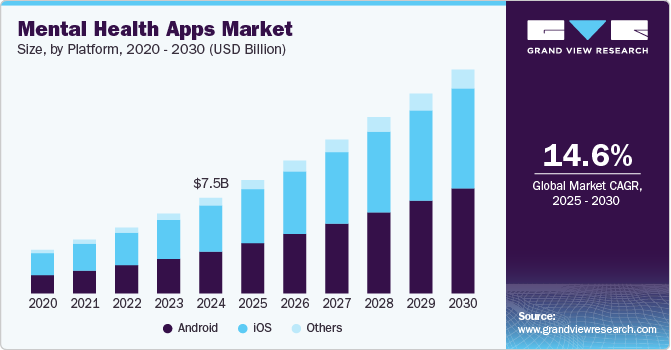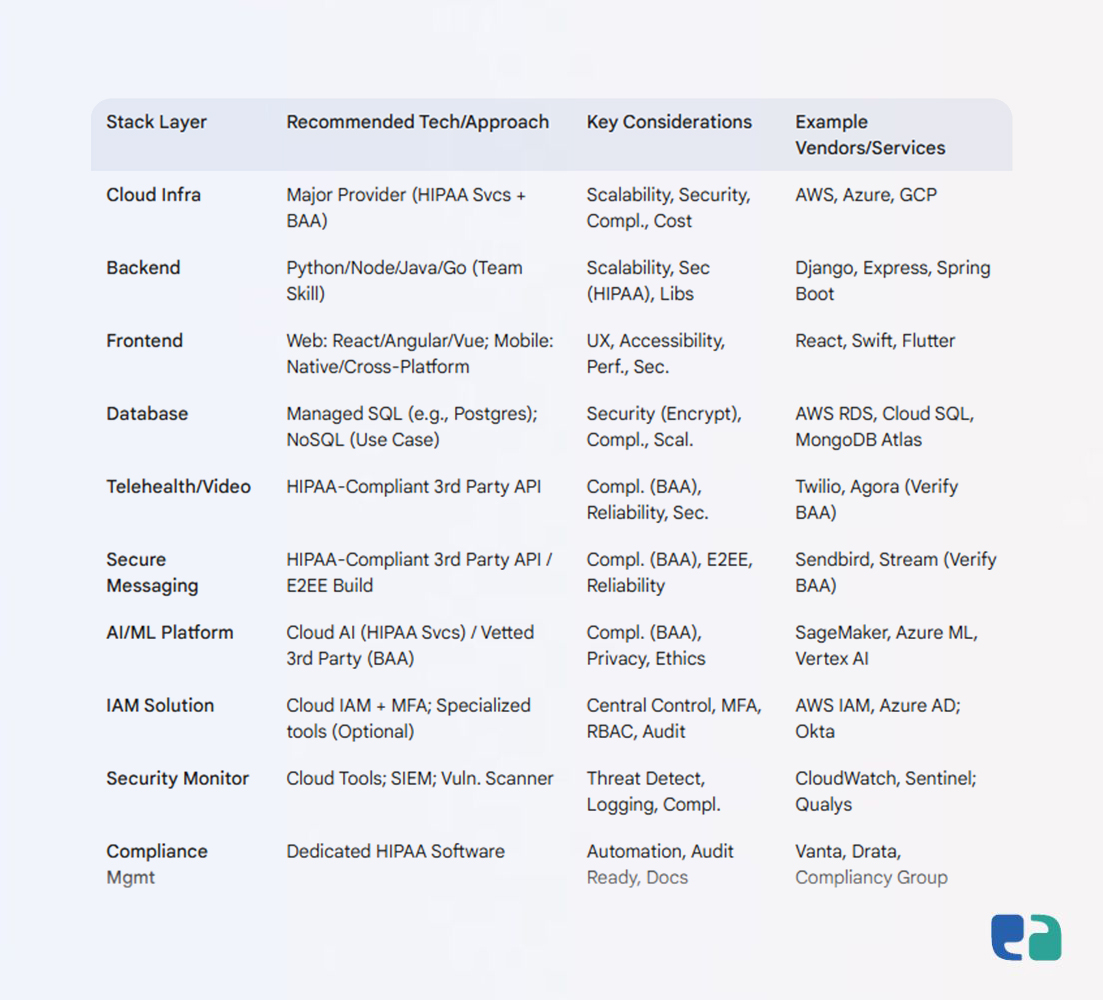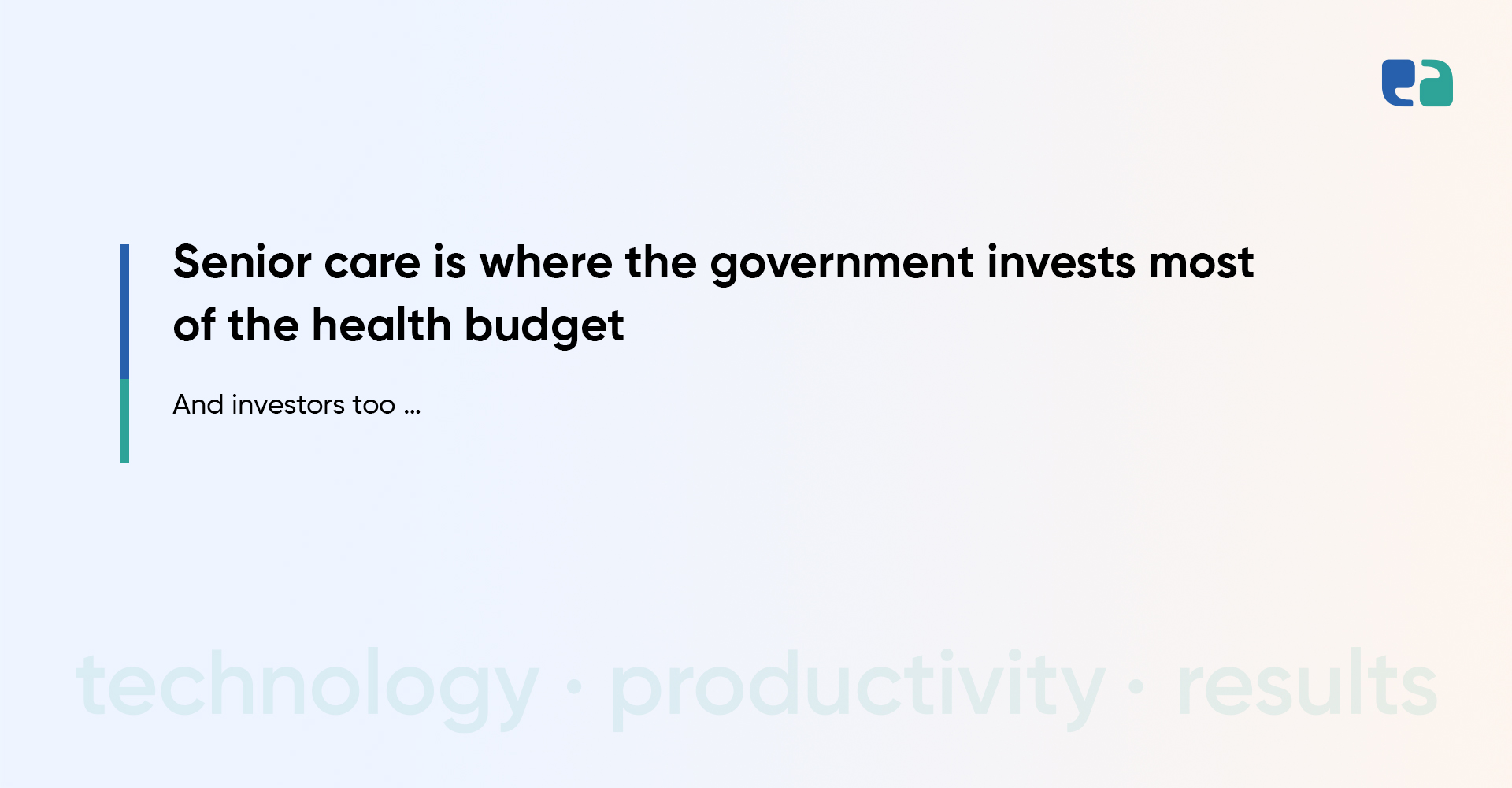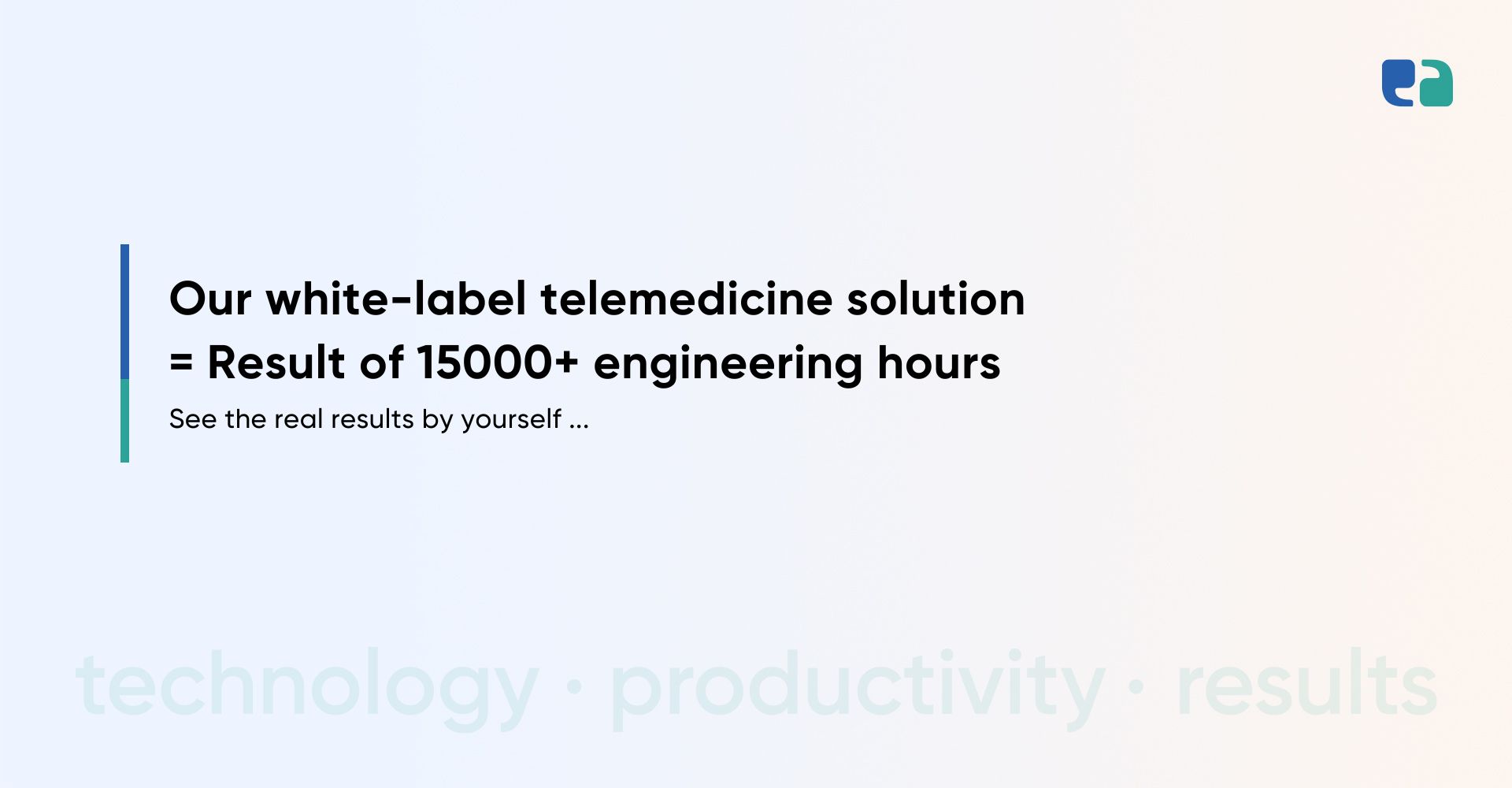The demand for mental health support isn’t just growing—it’s skyrocketing.
Globally, over 450 million people struggle with mental illness. That makes it one of the top causes of disability in the world.
In the U.S., 1 in 5 adults live with a mental health condition.
In Canada, over 6.7 million people are affected every year. And by the age of 40, 1 in 2 Canadians will have experienced a mental illness.
This growing need is creating space for mental health tech companies to step in. It’s a chance to build platforms that offer care in a more affordable, accessible, and flexible way.
But here’s the catch—great ideas alone aren’t enough.
To grow and truly make a difference, you need the right technology stack. One that’s secure, scalable, and built for the sensitive nature of mental healthcare.
Remember, you’re not just building an app. You’re handling deeply personal, protected health data. That comes with serious responsibilities—and strict rules like HIPAA in the U.S.
And your platform isn’t just a place to browse. It may be where someone speaks to their therapist. Or gets help in a crisis. So it needs to be reliable. Always.
In this blog, we’re going to walk you through the essential tech stack needed to grow your mental health tech company—without breaking trust or slowing down.
We’ll cover:
- The right cloud infrastructure
- Backend and frontend technologies
- Data security and compliance
- Must-have tools for features like telehealth and AI
- And how to make sure your platform can scale as you grow
Let’s get into it.

Why Your Tech Stack is Critical for Growth in Mental Health
Your tech stack isn’t just “what your app is built on.” It’s the foundation of everything you do.
In mental health tech, that foundation needs to be secure, scalable, reliable, and flexible—because you’re working in one of the most sensitive and regulated spaces in healthcare.
Let’s break down why it matters so much:
1. You need to grow—without slowing down
More people are turning to digital mental health solutions every day.
If your platform can’t keep up with user growth, it will start to lag—or worse, crash.
That’s why scalability is key. Tools like cloud infrastructure help you grow quickly while keeping things smooth and fast.
Want to support thousands of users in a live group therapy session or one-on-one video calls?
Then your backend and database must be built to handle real-time communication and high data volumes.
2. You’re dealing with highly sensitive data
Mental health data is deeply personal.
Your platform will likely store Protected Health Information (PHI), so security isn’t optional—it’s non-negotiable.
That means following strict regulations like HIPAA (U.S.), PHIPA (Canada), and even GDPR if you serve users in the EU.
Your stack needs to include:
- End-to-end encryption
- Strong login security (like multi-factor authentication)
- Role-based access control
- HIPAA-compliant cloud services
Trust is everything in this space. A single data breach could not only lead to massive fines—but lose user trust for good.
Must Read: Guide to HIPAA Compliant App Development in 2025
3. User experience matters more than ever
You’re helping people during vulnerable moments. So your platform needs to be easy to use, fast, and reliable.
A clean and simple user interface (UI) can make a huge difference. So can making sure your app works for people with different needs—by following accessibility standards like WCAG.
If your app is slow or crashes often, users might stop using it altogether.
That’s why the right stack helps you build a smooth, responsive, and trusted experience.
4. You need to move fast and innovate faster
Mental health tech is evolving quickly.
To stay ahead, your development team needs to be able to add features fast and pivot when needed.
That’s where a flexible stack helps. Tools and frameworks that support reusable components, easy updates, and AI/ML integration will speed things up.
Want to plug in secure chat, telehealth, or mood tracking? A smart stack helps you do that without building everything from scratch.
5. You may need to integrate with other health systems
As you grow, you might need to share data with hospitals or clinics.
To do that, your platform needs to speak the same “language” as other health systems.
That’s where FHIR (Fast Healthcare Interoperability Resources) comes in.
A future-ready tech stack makes it easier to connect with Electronic Health Records (EHRs) and expand your role in the healthcare ecosystem.
Foundational Pillars: What You Must Get Right in Mental Health Tech
When you’re building a mental health platform, some things are just non-negotiable. We’re talking about the stuff that keeps your app scalable, secure, and legally compliant—the very foundation your entire business (and your users’ trust) stands on.
Here’s what you absolutely need:
1. Cloud Infrastructure: The Base You Build On
Cloud isn’t just a trend—it’s a must.
It helps you scale smoothly as your user base grows, and it gives you the reliability and uptime your users expect—especially during peak hours or emergencies.
The big three?
- AWS (great for healthcare, tons of HIPAA-eligible services)
- Azure (ideal for enterprise setups and Microsoft integration)
- Google Cloud (strong in data and AI/ML)
But here’s the catch: none of these are HIPAA-compliant out of the box. You need to configure them properly using their HIPAA-eligible services and sign a Business Associate Agreement (BAA).
Choose based on your team’s skills, budget, and the kind of features you want to build.
2. Security: Lock It Down from Day One
You’re handling highly sensitive data, so security isn’t optional—it’s a responsibility. Here’s what you need to do:
- Encrypt everything – Data at rest and in transit. Use tools like AWS KMS, Azure Key Vault, or Google Cloud KMS.
- Control access – Only the right people should see the right data. Use Role-Based Access Control (RBAC), Multi-Factor Authentication (MFA), and set up centralized identity management.
- Stay alert – Run regular security scans, audits, and even simulate cyberattacks (penetration tests) to find and fix issues fast.
Also, don’t forget to keep detailed audit logs. They’re essential for compliance and tracking down problems if anything goes wrong.
3. Compliance: Built-In, Not Bolted-On
If you’re in healthcare, you can’t afford to treat compliance as an afterthought.
- Build your app to follow HIPAA (US), GDPR (Europe), and PHIPA (Canada) rules from the start.
- Know where your data lives. Regulations like GDPR care a lot about data residency—so make sure data from EU users stays in the EU (same for other regions).
- The earlier you plan for compliance, the fewer expensive headaches you’ll deal with later.

Core Tech Layers: What Powers a Mental Health App Behind the Scenes
Your app’s success isn’t just about what users see—it’s also about what they don’t. The frontend, backend, and database each play a major role in shaping the overall user experience and ensuring the platform is secure, scalable, and reliable.
1. Frontend: The Face of the App
This is what users interact with—whether it’s a mobile app or a browser-based platform.
- Web apps: Popular JavaScript tools like React, Vue.js, and Angular help build responsive and interactive user interfaces.
- Mobile apps: You can either go native (Swift for iOS, Kotlin for Android) for top performance, or use cross-platform tools like Flutter or React Native to speed up development.
For mental health apps, usability and accessibility are non-negotiable. The design should be clean, calming, and easy to navigate—even for users who might be emotionally overwhelmed. And yes, WCAG accessibility standards matter here too.
2. Backend: The Brain of the App
The backend handles logic, processes data, and connects everything together.
- Popular choices include Node.js, Python (Django or Flask), Java (Spring Boot), and Ruby on Rails—pick one based on your team’s expertise and your app’s needs.
- Secure APIs are a must. REST is common, but GraphQL can also be a smart choice if your app needs very specific data requests. Either way, use encryption and proper access controls to protect user data.
3. Database: The Data Vault
This is where all sensitive info—like patient records or chat histories—is stored.
- Use SQL (like PostgreSQL) when your data is structured and you need complex queries.
- Choose NoSQL (like MongoDB) if your data is flexible or changes often.
- Most teams now use a hybrid model, depending on the data type.
No matter what you choose, security is key. Encrypt the data (at rest and in transit), restrict access, and rely on cloud-managed services for backups and compliance. And always have a disaster recovery plan—just in case.

Technologies That Help You Scale and Stand Out
If you’re building a mental health app that needs to grow with your users—or stand out in a crowded space—choosing the right tech stack is just as important as the idea itself. Here’s how we approach it:
1. Scalable App Architecture
You have two main options when structuring your app:
- Microservices: Ideal for large or complex apps. Each feature (like chat, scheduling, video) runs as a separate service. It’s easier to scale and update without breaking the rest of the app.
- Monolith (but well-structured): Better for simpler apps or early MVPs. It’s faster to build and easier to manage early on. We often start here and transition later if needed.
To make scaling smoother, we use Docker (for packaging everything) and Kubernetes (for managing and scaling across servers automatically).
We make sure your app can talk to the outside world—and be ready for future partnerships.
- Need payments? Analytics? We connect with services like Stripe, Mixpanel, and more.
- Want to connect with EHRs? We use healthcare standards like FHIR to make that possible.
- And if you want to create your own ecosystem or offer APIs to other apps later? We’ll build your internal APIs right from day one.
3. Data Analytics & Insights
Success isn’t just about downloads—it’s about outcomes. We help you:
- Track how users engage with the app and which features are helping the most.
- Use anonymized data to gain insights without compromising privacy.
- Set up dashboards and reports to demonstrate real-world impact.
4. AI & Machine Learning (Optional)
Want to personalize therapy suggestions? Use a chatbot for basic support? Predict when users might need urgent help?
- AI can power features like risk assessment, smart reminders, and support bots.
- But it requires careful planning, especially when mental health and safety are involved. We’ll guide you through what’s feasible and compliant.
5. Telehealth Integration (Optional)
Need to add virtual therapy or real-time messaging?
- We use secure tools like WebRTC or integrate with HIPAA-compliant third-party video APIs.
- We also build real-time chat features with encryption, making remote support smooth and safe.
Key Things to Keep in Mind When Choosing Your Tech Stack
Picking the right tech stack isn’t just a technical decision—it’s a strategic one. It affects how fast you build, how secure your app is, how easy it’ll be to maintain, and how future-proof your platform will be. Here’s what we recommend considering:
1. Your Team’s Skills (and Who You’ll Need to Hire)
Start with what your team already knows. If they’re experienced with certain languages or frameworks, stick with those—it’ll save time and money.
Also, think long-term: will it be easy to find more developers who know this stack?
And most importantly—make sure your team knows healthcare. General app developers often miss the clinical side of things.
At SyS Creations, we only work on healthcare projects, so we already understand the workflows, security needs, and compliance challenges.
2. Speed vs. Long-Term Health
Some tools help you build quickly, which is great for MVPs. But fast isn’t always future-friendly.
A messy codebase becomes expensive to maintain later. So even if you’re moving fast, don’t skip documentation or structured development.
Think of it like building a clinic—you don’t want to redo the plumbing later.
3. Budget and Ongoing Costs
Your budget matters, of course. But don’t just think about the cost to build.
Factor in cloud hosting, storage, licensing fees, and future upgrades.
Cross-platform tools (like React Native) or even PWAs can help save costs early on.
Also—don’t try to save money by hiring non-healthcare app agencies. They may miss critical things, which leads to rework and wasted time.
4. Security and Compliance (This Is Huge)
Mental health data is sensitive. Your app must follow laws like HIPAA (US), PHIPA (Canada), or GDPR (EU).
That means strong encryption, secure user authentication, and safe data storage.
If your app agency doesn’t know compliance or doesn’t have a dedicated compliance expert, that’s a red flag.
At SyS Creations, we’ve been helping clients meet these regulations for over 10 years, explore our case studies.
5. Think About the Future
Where do you see your app going? More users? More features?
Choose tools that scale well. For example, we often use React.js (frontend), Node.js (backend), and MongoDB (database)—they can handle growth without slowing down.
And if you need microservices down the line, your app will be ready.



